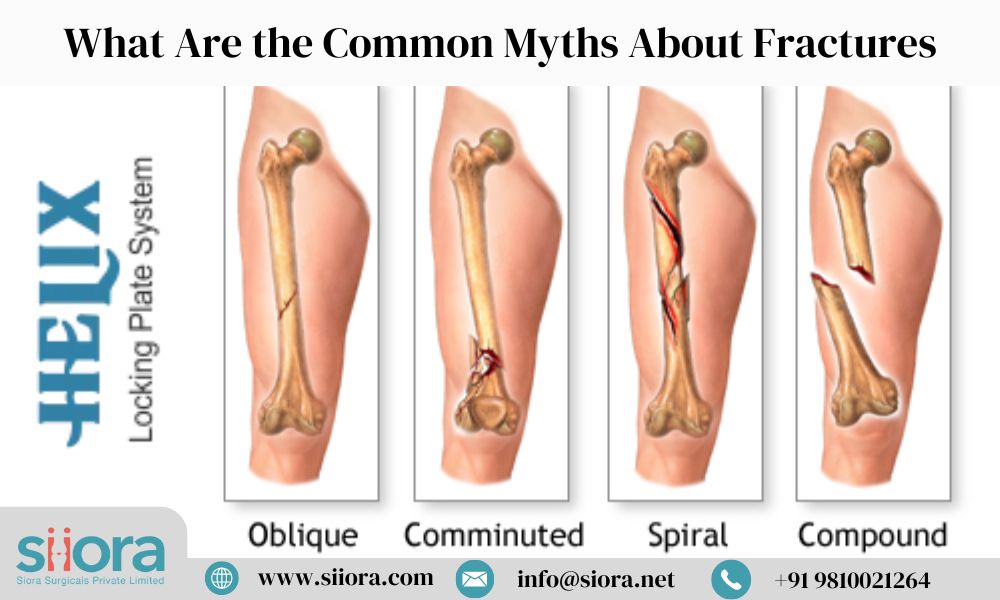Fractures or broken bones are common injuries. They can happen during a high-impact activity like a car accident or a simple slip while walking. Regardless of the cause, fractures can be painful and debilitating. Some serious cases may require stabilization using Bone implants. But along with the discomfort comes a surprising amount of misinformation. In this blog post, we will debunk some of the most common myths about fractures to ensure you get the proper care.
9 Common Myths About Fractures
Only athletes or active individuals get fractures
This is simply untrue. While athletes are more prone to specific types of fractures due to the nature of their activities, fractures can happen to anyone, regardless of age or activity level. Osteoporosis, a condition that weakens bones, makes older adults more susceptible to fractures from even minor falls.
If you can move your injured limb, it means it's not fractured
Pain is a strong indicator of injury, but not always a reliable measure of fracture severity. You might be able to move a fractured limb, especially if it's a hairline fracture. On the contrary, severe sprains can also cause significant pain and limit movement. The only way to diagnose a fracture is with a medical evaluation, which typically includes X-rays.
Fractures always cause immediate and severe pain
Pain is a common symptom of a fracture, but it can vary greatly. Some fractures, particularly hairline fractures, might cause minimal initial discomfort. You might experience swelling, bruising, or a feeling of instability in the injured area more than intense pain. Don't ignore these subtle signs. If discomfort is unbearable or persistent, visit an experienced orthopedist.
Fractures heal faster if they are left untreated
Leaving a fracture untreated can lead to serious complications. Bones need proper alignment and support to heal correctly. Without medical intervention, the bone fragments might not mend properly, resulting in deformity, weakness, and long-term pain. A doctor can determine the best course of treatment, which might involve casting, splinting, or even surgery. This completely depends on the severity of the fracture.
After fracture healing, no extra care is required
Following your doctor's instructions after the initial treatment phase is crucial for a full recovery. Physical therapy plays a vital role in regaining strength, flexibility, and range of motion in the affected area. Ignoring physical therapy can lead to stiffness, weakness, and an increased risk of re-injury.
Fractures require surgery
Not all fractures require surgery. Many fractures, especially hairline fractures or those in stable positions, can heal effectively with casting or splinting. However, surgery might be necessary for more complex fractures, those involving displaced bones, or fractures with a high risk of complications.
Increasing calcium intake can speed up fracture healing process
While calcium is essential for bone health, simply increasing your calcium intake won't necessarily speed up fracture healing. Your body needs a combination of nutrients, including calcium, vitamin D, and protein, to build and repair bone tissue. A balanced diet and following your doctor's recommendations regarding supplements will provide the best support for healing.
Fractures have a specific timeline for healing
Healing times for fractures vary depending on several factors, including the type and severity of the fracture, the patient’s overall health, and age. Children tend to heal faster than adults, and healthy bones generally heal quicker than those weakened by osteoporosis. Your doctor will be able to give you a more precise estimate of healing time based on your condition.
To gain knowledge about the advancements in the orthopedic industry and explore cutting-edge trauma devices, visit the Malaysian Orthopedic Association 2024 Conference.


No comments yet